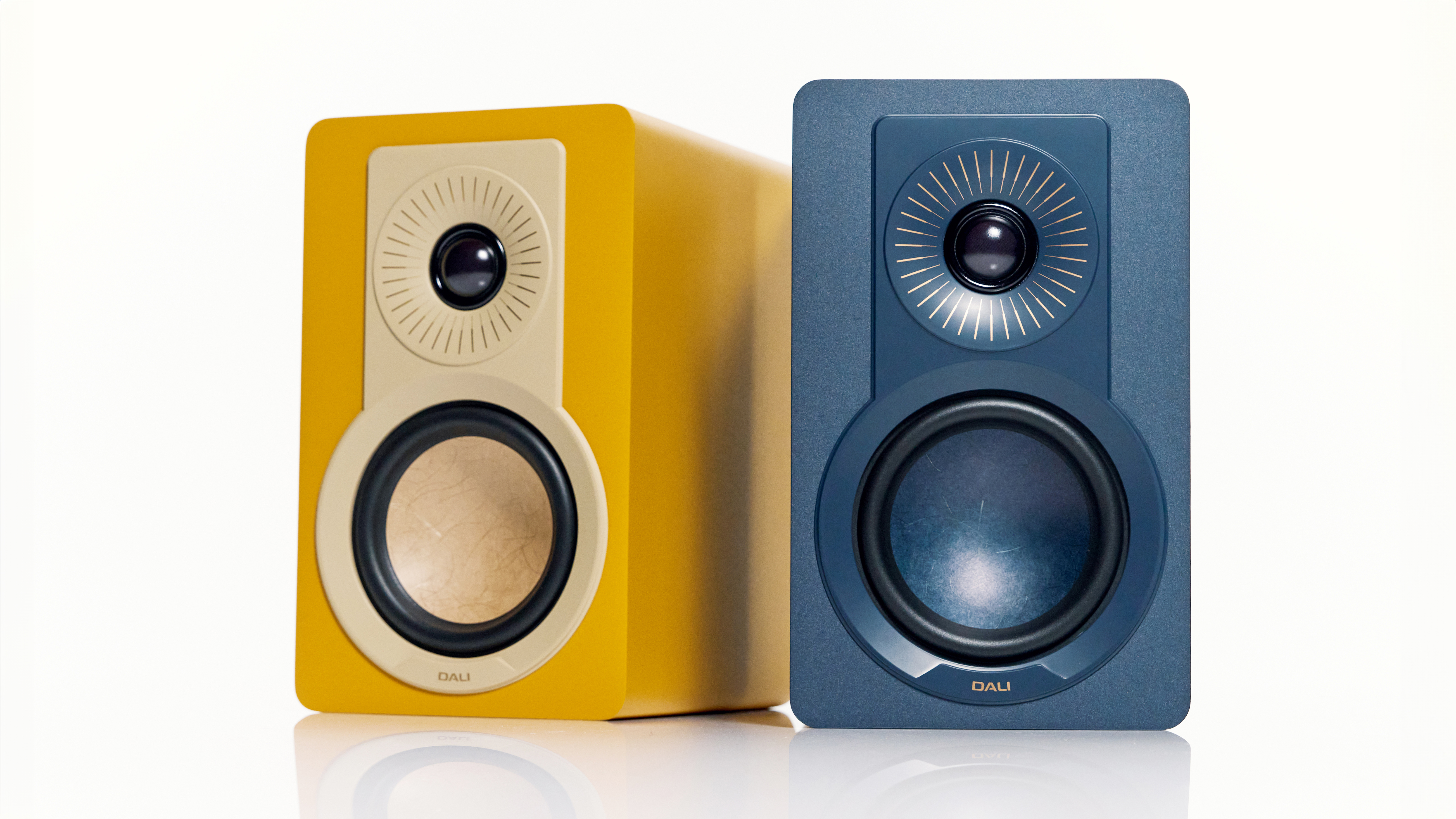I love my Dali bookshelf speakers, so I’m really intrigued by this new budget pair that come in funky colors

- Dali's new Kupid stereo speakers cost £299 (about $400 / AU$625)
- 4.5-inch woofer with 26mm custom-designed tweeter
- 4-ohm impedence makes them easy to play from any stereo amp
Danish hi-fi company Dali has just announced a new pair of budget stereo bookshelf speakers, and as someone who's been testing the model just above them in the range at home recently, I think these could be very interesting.
The new speakers are called the Dali Kupid, and they're hoping to make you fall in love with their funky color options (as well as more traditional wood finishes), and their promise of detailed, audiophile-pleasing sound for a low price of just £299 (about $400 / AU$625 – no price has been confirmed for the US or Australia at the time of writing).
They sit between the cheapest Dali Spektor 1 bookshelf speakers ($280 / £199 / AU$499) and the impressive Dali Oberon 1 speakers ($600 / £399 / AU$749) – both of which scored five stars from our friends at What Hi-Fi? in their reviews of those products.
I've been using the Dali Oberon 1 at home recently as part of testing a new streaming amp, and they're really quite astounding for the price when it comes to detail and musicality – which means I think these genuinely could be fantastic value.
The Kupid are built with a custom-designed 26mm tweeter paired with a 4.5-inch mid-woofer. While the woofer appears to be very similar to one in the Spektor 1, the combination with a new tweeter and different bass reflex design could produce wider-ranging sound than the Spektor 1.
Though having said that, I should note that the Kupid are rated for slightly less extensive bass frequencies than the Spektor 1 (63Hz for the Kupid and 59Hz for the Spektor) – but spec numbers never tell the whole story with speakers, so I would expect a more full sound from the Kupid when factoring in all elements of the design.
One of the big focuses of the Kupid seems to be making them easy to live with – Dali suggests they should be pretty unfussy to place and get good sound from, and they come with wall brackets in the box as well as rubber feet.
Sign up for breaking news, reviews, opinion, top tech deals, and more.
They're also reasonably small, and they can be powered comfortably from 4-ohm amplification, so budget amps should have no problem getting their best sound. Dali says they should sound great quiet as well as loud, so they're suited to a lot of different environments – this is something the Oberon 1 are great at, so I don't doubt it here.
And perhaps coolest of all, they come in five great finishes for different tastes: Black Ash, Walnut, Caramel White, Golden Yellow, and Chilly Blue.

A great way to step up to the detail of bookshelf speakers?
These look like they would pair nicely with something like the Pro-Ject Stereo Box E amp, which costs $349 / £199 and should have enough power for these speakers, plus has Bluetooth built in. That would get you lovely analog audio components from two great hi-fi makers, all in a compact size, plus the convenience of wireless connectivity – all for under £500 total, in the UK.
If you compare to a similar wireless stereo speaker setup – something like a pair of Sonos Era 100 speakers costs only a little less – you'd almost certainly hear a major difference in detail and clarity from the hi-fi system.
With far bigger speaker drivers, more air moved, and more space for powerful components, you'll find that music has a lot more room to express itself than from a smaller system. This usually means you'll get the experience of hearing 'new' elements in songs, or just be able to appreciate them anew with an improved sound profile.
I actually did a comparison listening test recently between a pair of stereo Sonos Era 300 speakers and the Dali Oberon 1 speakers with the new Wiim Amp Ultra powering them – and although the Sonos speakers gave a great account of themselves with the sound dispersal and hefty low-end, the Oberon 1 had a clear edge when it came of mid-range expression, detail across the frequencies, and the handling of complex instrument mixes. Basically, all the things that make you feel really immersed in a song are boosted.
Obviously, we'll have to give these a real test to see if they can do the same at a lower price, but given my recent experience with Dali speakers, and the company's history, I think these look like a good threat to our list of the best stereo speakers.
You might also like…
- Dali’s mega-powerful 16-inch ported subwoofer wants to shake your home theater to bits, in a good way
- Sonus Faber Concertino G4 review: the bookshelf-speaker dragon I’ll be chasing for decades to come
- Pro-Ject’s new cheap turntable cuts out the bells and whistles to focus on sound – but it might be one cut too far

Matt is TechRadar's Managing Editor for Entertainment, meaning he's in charge of persuading our team of writers and reviewers to watch the latest TV shows and movies on gorgeous TVs and listen to fantastic speakers and headphones. It's a tough task, as you can imagine. Matt has over a decade of experience in tech publishing, and previously ran the TV & audio coverage for our colleagues at T3.com, and before that he edited T3 magazine. During his career, he's also contributed to places as varied as Creative Bloq, PC Gamer, PetsRadar, MacLife, and Edge. TV and movie nerdism is his speciality, and he goes to the cinema three times a week. He's always happy to explain the virtues of Dolby Vision over a drink, but he might need to use props, like he's explaining the offside rule.
You must confirm your public display name before commenting
Please logout and then login again, you will then be prompted to enter your display name.